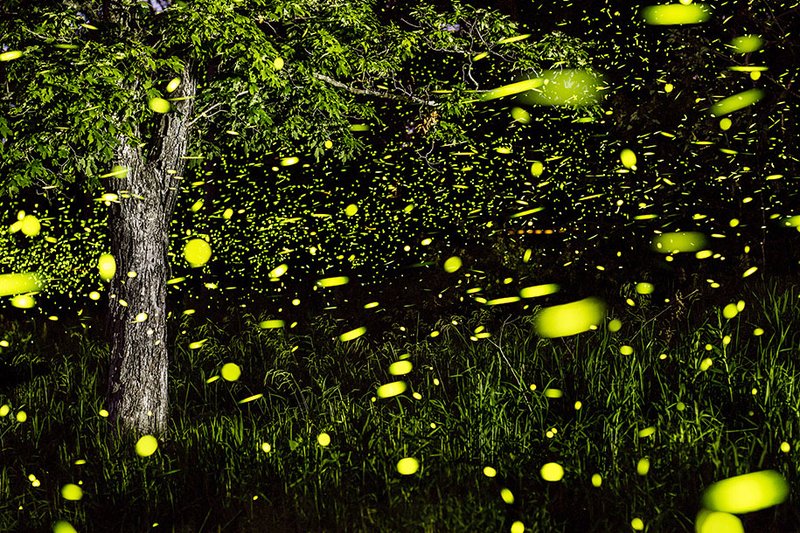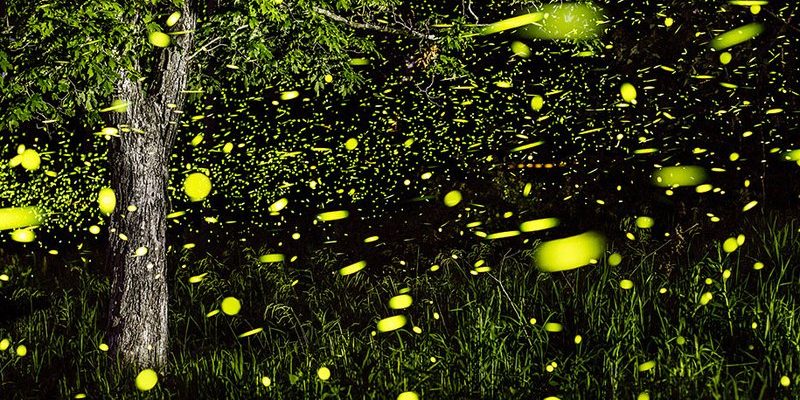
Let’s dive in and discover 10 things you didn’t know about the firefly. Whether you’re looking to impress at a summer barbecue or just want to know more about these fascinating creatures, you’ll see that fireflies are more than meets the eye!
1. Fireflies Aren’t Flies at All
You might be surprised to learn that fireflies aren’t technically flies. They belong to the order Coleoptera, which is the same order that includes beetles. So, when you think of fireflies, picture adorable little beetles with a glowing twist! Isn’t that interesting?
These glowing creatures, often found lighting up backyards during warm months, are actually part of a larger family called Lampyridae. This family of beetles includes about 2,000 species worldwide. Maybe next time you see one, you’ll think of it more as a tiny, glowing beetle instead of just a fly!
2. The Science Behind Their Glow
Have you ever wondered why fireflies glow? Here’s the thing: it’s not just for show. Fireflies produce light through a chemical reaction in their bodies, a process known as *bioluminescence*. They take a compound called luciferin and combine it with an enzyme called luciferase, oxygen, and ATP (the energy currency of cells). The result? That magical glow that we all love!
This bright light serves a few key purposes. Most commonly, it’s used for attracting mates. Male fireflies flash their lights to signal their presence, and females respond with their own distinct flashes. Imagine a dance of lights in the dark—talk about a romantic evening!
3. They Use Different Flash Patterns
Not all fireflies are created equal, especially when it comes to their light patterns. Different species have unique flashing sequences. Some might blink steadily, while others produce more rapid flashes or even glow continuously. It’s almost like they have their own languages!
These patterns can help fireflies identify their mates. Here’s an example: the female Photinus firefly typically responds to the male’s flashes after a pause. This timing helps ensure they find their perfect partner. So, when you see those flashes, just remember: they’re not just pretty lights—they’re part of an intricate conversation!
4. Fireflies Have a Short Lifespan
You might think that glowing in the dark would extend a firefly’s life, but that’s not the case! Most adult fireflies only live for about two months, and their main focus during that time is to reproduce. After mating, female fireflies often lay their eggs in moist soil or decaying wood, which is crucial for the survival of their species.
Interestingly, the larval stage is where the firefly spends most of its life—up to a year! During this time, they might not glow, but they still have fascinating roles in their ecosystem. Firefly larvae are known to be predatory, feeding on snails and other small insects. Who knew these little beauties could be such fierce hunters?
5. Fireflies Are Found All Over the World
Fireflies might seem like a staple of summer evenings in your backyard, but they’re actually found across the globe! While some people associate fireflies with warm summer nights in the United States, you can find them in many other regions, including parts of Europe, Asia, and South America.
Interestingly, not all regions host the same species. For example, there are about 200 species of fireflies in North America alone, but in Southeast Asia, you can find vibrant firefly festivals where thousands of them light up the night, creating dazzling displays. It’s a sight worth seeing if you ever get the chance!
6. Their Role in the Ecosystem
Fireflies might be famous for their glow, but they play an essential role in their ecosystems. As larvae, they help control pest populations since they feed on snails and other small insects. In their adult stage, fireflies serve as food for birds and other predators.
Additionally, their presence can indicate the health of the environment. Because fireflies thrive in areas with clean water and healthy vegetation, seeing them around can be a sign of a thriving ecosystem. So, the next time you see a firefly, take a moment to appreciate its role in keeping nature balanced!
7. Fireflies Are Facing Threats
Unfortunately, fireflies are struggling in some parts of the world. Habitat loss, pollution, and climate change are contributing to declining populations. Urbanization and pesticide use can destroy the environments they depend on for survival.
As we change our landscapes, fireflies lose their homes and their ability to thrive. It’s essential that we take steps to protect these magical creatures and their habitats. Planting native flowers, avoiding pesticides, and creating natural spaces can all help fireflies find safe havens to flourish.
8. Some Fireflies Don’t Light Up at All
You might be surprised to learn that not all fireflies glow! Some species have lost their ability to produce light as adults. Instead of the iconic glow, they rely on other senses to communicate and attract mates. Isn’t that fascinating?
In fact, some of these non-glowing species may find ways to mimic the light patterns of glowing species to lure in their prey. It’s a bit of clever deception—you could think of it as nature’s very own version of camouflage!
9. Cultural Beliefs and Folklore
Throughout history, fireflies have captured the imagination of people worldwide. In many cultures, they are seen as symbols of hope and love. In Japan, fireflies are celebrated during festivals, where people release them as a gesture of good fortune.
In other cultures, fireflies are believed to carry messages from the deceased or represent the spirits of lost loved ones. Their glow brings a sense of warmth and connection, reminding us of the beauty of life, love, and nature’s wonders.
10. You Can Attract Fireflies to Your Yard
Want to see more fireflies in your backyard? Attracting them can be easier than you think! Here are some simple steps you can take:
- Plant native plants and flowers to provide food sources for adult fireflies.
- Leave some moisture in your garden, like damp soil or a small pond, as larvae thrive in wet environments.
- Avoid using pesticides that can harm fireflies and their habitats.
- Create dark, sheltered spaces like logs or tall grass where fireflies can hide and feel safe.
By making these small changes, you can help create a welcoming environment for fireflies to thrive.
In conclusion, fireflies are more than just enchanting night lights; they’re remarkable creatures with unique lives, roles in the ecosystem, and cultural significance. Whether you’re enjoying their glow on a summer evening or learning about their fascinating biology, there’s always more to discover about these little wonders of nature. So next time you catch a glimpse of that flickering light, remember the incredible journey of the firefly and the magic they bring to our world!

